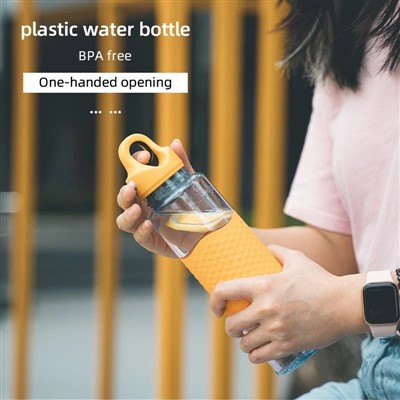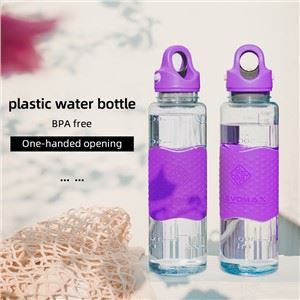Q: What’s better: plastic or stainless steel water bottle?
A: Plastic bottles, like stainless steel bottles, are durable. They are lightweight compared to stainless steel water bottles. But, plastic contains BPA. BPA has an adverse effect on health. They should be kept away from heat as they may melt the plastic, causing BPA compounds to react with water. Also, using fewer plastic products is good for the environment too.
Q: How unhealthy are plastic water bottles?
A: Over time harmful, carcinogenic substances like BPA and DEHP can build up in your bloodstream and cause serious health problems. Additionally, scratches and chips in the soft plastic can become breeding grounds for bacteria, while the shape of many bottles makes thorough cleaning difficult.
Q: Is it OK to use plastic bottles for drinking water?
A: Materials used in water bottles and other food containers, such as BPA, are safe. All in all, water in plastic bottles is safe to drink. The same goes for water in metal bottles or any other type of drink container.
Q: Why are plastic water bottles banned?
A: Single-use plastic bottles are a major contributor to the global plastic pollution crisis that's endangering marine life, polluting our oceans, and suffocating our natural landscapes. These bottles take hundreds of years to decompose, releasing harmful chemicals into the environment during their slow breakdown.
Q: What plastic is safe for water bottles?
A: PET has been used to package beverage, food, and other products for more 35 years. For the record, PET plastic does not contain bisphenol A (BPA). High density polyethylene (HDPE) is another plastic bottled water packaging material that FDA has approved as safe for food contact.
Q: Is it safe to drink water from plastic bottles left in hot car?
A: If a plastic disposable water bottle is BPA-free and unopened, it's probably safe to leave it in a hot car.
Q: What is the number 1 plastic bottle?
A: Number 1 – PET (Polyethylene terephthalate)
This is one of the most commonly used plastic materials in the manufacture of packaging. It is usually found in bottles containing liquids such as water or oil.
Q: How long can water sit in a plastic bottle?
A: Since water is a naturally occurring substance it has an indefinite shelf life, however due to the fact that plastic water bottles leach chemicals into the water overtime we recommend a 2 year shelf life for still water.
Q: What does 7 mean on a plastic bottle?
A: This category of plastics represents everything that does not fit in the above resin codes, such as polycarbonates (PC). It also includes multi-resin and mixed plastic items. Examples include electronic equipment, glasses frames, and plastic brick toys.
Q: How do I order plastic water bottles?
A: First, fill out the price and delivery estimator, product colors, lid color (if applicable) and imprint color. Next, choose from the artwork options. Now you're ready for checkout. Our team will not start production on your plastic water bottles until you approve the design.
Q: Are reusable plastic bottles safe to use?
A: Reusable plastic bottles are a much safer alternative to prepackaged water bottles that are known to leak microplastic particles into beverages.
Q: Are glass water bottles healthier than plastic?
A: Many plastics, and some metal, vessels contain bisphenol A (BPA), a chemical the Food and Drug Administration (FDA) began warning about in 2010 due to its correlation with cancer. Glass is the safest water bottle type because it's chemical-free, made from natural materials, and dishwasher safe.
Q: Is it better to drink from stainless steel or plastic?
A: As you can see, stainless steel products are the way to go for drinking bottles. They have a significantly lower environmental impact, are better for your health, have superior temperature retention, are more durable, last longer, and are more cost-effective.
Q: Are glass water bottles safer than plastic?
A: Glass is the safest reusable water bottle material because it's chemical-free, made from natural materials, and dishwasher safe. Glass water bottles don't leach harmful chemicals into your water and is another way to reduce or avoid microplastics.
Q: How do plastic water bottles affect the environment?
A: In the environment, plastic bottles can break down into miniscule particles, called microplastics, which make their way into our food water, posing a potential risk to human health.
Q: How many times can you use a plastic water bottle?
A: Plastic #1: Also called polyethylene terephthalate, PET or PETE, plastic #1 is used to manufacture many plastic bottles. Plastic #2: High-density polyethylene (HDPE), or plastic #2, is designed to minimize the growth of bacteria. However, it is still intended for one-time use.
Q: How many days we can use a plastic bottle?
A: On the basis of all the information available on this issue I would advise you don't re-use a plastic water bottle for more than three or four weeks, just to be on the safe side. You may want to consider a reusable glass bottle as an alternative.
Q: What happens if you use a plastic water bottle for too long?
A: Some research shows that reusing plastic water bottles is unwise because chemicals may leach into water, and bacteria and fungi can grow in the bottles, making drinking water unsafe.
Q: Is it bad to always drink out of plastic water bottles?
A: Water in plastic bottles is safe to drink.
Q: How can you tell if a plastic bottle is reusable
A: On the base of each bottle, there should be a number surrounded by the universal “recycling” triangle sign. If your bottle is made from #2, #4 or #5, you should be fine to reuse it. If it's made from any other number, you may want to steer clear of it.


































